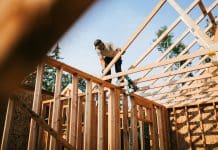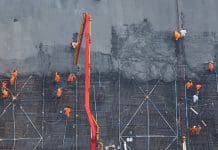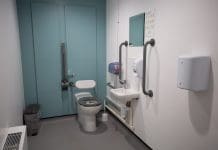Sajid Javid has provided an update on the government response to the Grenfell Tower tragedy to Parliament on 5 September
Communities Secretary Sajid Javid outlined the progress made following the fire Grenfell Tower twelve weeks ago, including the appointment of the Grenfell Recovery Taskforce who have started their work to implement a long term recovery plan.
He said that the process of removing control of properties from the tenant management organisation has begun, the remit of the public inquiry has been set, a temporary school has been built, and work is underway on the scaffolding that will surround the tower.
Javid’s statement wanted to concentrate on two specific areas: the rehousing of residents, and the building safety programme.
On rehousing, he outlined that 151 homes were lost to the fire, but a total of 196 households from Grenfell Tower and Grenfell Walk would need a new home due to people wanting to be re-housed separately.
The statistics are:
· 61 households have accepted an offer and 29 have moved in.
· 153 households, including all but 2 of those who suffered a bereavement, have had face-to-face meetings with the team responsible for offering a choice of permanent homes.
· 164 households have used the online allocation system to look at what permanent accommodation is available.
· 127 have expressed an interest in one or more properties.
· So far 10 households have accepted offers, and two have moved in.
· 21 households that accepted offers on temporary accommodation with housing associations have asked for their tenancies to made permanent.
Javid accepted that the number of people who had moved into either temporary or new homes was low, but said that:
“What matters to us isn’t ticking boxes but working at a pace that suits the needs and circumstances of individual residents.
“That’s why, at the request of residents, the council extended the “expressions of interest” period for permanent homes.”
On testing and building safety, Javid acknowledged that the Grenfell tragedy extended nationally with 173 social housing buildings across England that are over 18 metres tall and clad with some form of aluminium composite material, or ACM.
In July, the Building Research Establishment (BRE) began a series of large-scale fire safety tests on ACM cladding systems, comprising both the visible cladding and the internal insulation.
The aim was to establish whether each system, when properly fitted, complied with the relevant Building Regulations guidance, BR135.
Three of the seven cladding systems that were tested were found to meet the criteria set out in BR135 and these are in use on eight social housing towers. Alarmingly, the systems that failed are in use on 165.
Javid said that:
“The owners of affected buildings have been given detailed advice drawn up by our independent expert advisory panel.
“This covers steps to ensure the safety of residents including, where necessary, removal of cladding.
“We have also been holding weekly update calls with local authorities, housing associations and other building owner groups.
“We have today published further advice that brings together all the results and the views of the expert panel on the implications for building owners.
Javid outlined that meetings with local authorities and housing associations to discuss further steps would happen soon and include the process to ensure that remedial work is carried out.
He urged all private owners of similar blocks to submit samples for testing and asked that housing authorities ensure the same steps are taken for all private sector residential tower blocks in their areas and to collect the data to gain an understanding of the scale of the issue and to track the remedial action.
Other safety issues
Since the Grenfell fire, other safety issues related to building design have been discovered as part of the inspection process, which include the possible need for strengthening work on blocks constructed using the concrete panel system that, in 1968, failed with devastating effect at Ronan Point. Concerns have also been raised about cracks that appeared cosmetic, but could compromise fire-safety compartmentation.
Javid noted that:
“Separately, the British Board of Agrément has told us that, based on their investigations following incidents in Glasgow, some cladding systems may be designed and installed in such a way that they could fail in strong winds.”
Javid also mentioned that the wider issues of competence and certification would feed into Dame Judith Hackitt’s review of building safety, the terms of reference for which were announced last week.
Javid mentioned the establishment of an Industry Response Group, which will help the sectors required to improve building safety and to coordinate their efforts.
Finally, Javid payed tribute to the strength and determination of the people of North Kensington and the dignity and courage of the survivors.













